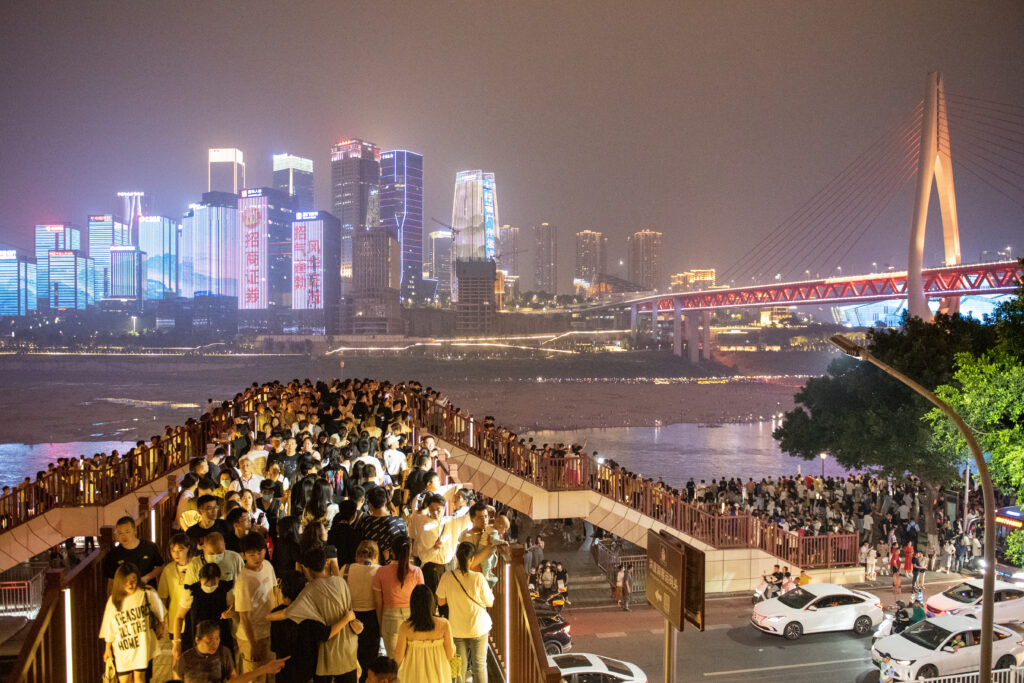May 27, 2023
Stories from China (Part 13)
By Simon J. Lau

This morning, I visited Liziba. Chongqing’s steep, mountainous terrain leaves very little flat, open space, which has forced urban planners to get creative with the city’s infrastructure. One striking example is the Liziba subway stop, where trains actually pass straight through the middle of a commercial and residential building. It might look unorthodox, but it’s an efficient use of space and surprisingly convenient for the people who live and work there.

In the evening, I went on a river cruise along the Jialing River, which gave me a completely different perspective on Chongqing. From the water, I had a perfect view of Hongya Cave, its traditional wooden facades clinging to the hillside, lit up in gold and red as night fell. I’d seen countless photos of this place before, but from the river it looked surreal.

Further along the cruise, we passed under one of Chongqing’s famous twin bridges. Lit up in brilliant colors, it stretched across the water, linking different parts of the city. From below, with the city skyline rising in the background, the scale of it all really hit me. I hadn’t expected much from the cruise, but I ended up enjoying it far more than I thought I would.

While visiting, I also noticed how unusually low the river levels were. I could see wide stretches of exposed shoreline along the riverbanks that would normally be underwater. China is currently facing a severe drought, and both the Yangtze and Jialing Rivers have been affected. Beyond the environmental impact, the drought has created serious challenges for the country’s hydroelectric power grid, which depends heavily on these rivers.

After the cruise, I visited Hongya Cave. Built into the side of the mountain, its rows of wooden stilt houses rise one above the other, their balconies stacked like giant steps along the cliff. First constructed during the Ming dynasty, it has been rebuilt many times over the centuries and has at one time served as a military fortress.

Today, the entire complex has been transformed into a commercial center, a lively maze of restaurants, tea houses, and shops all connected by long tunnels. At night, the lights come on and the walkways fill with people.

Finally, there’s a common stereotype about Sichuan women, including those from Chongqing, that they have beautiful skin. Some say it comes from the region’s humid climate, its spicy food, or even the tradition of drinking lots of tea. My wife, Jean, is Sichuanese, and her skin is flawless. After spending more time here, I can see why that reputation exists.




Comments are closed.